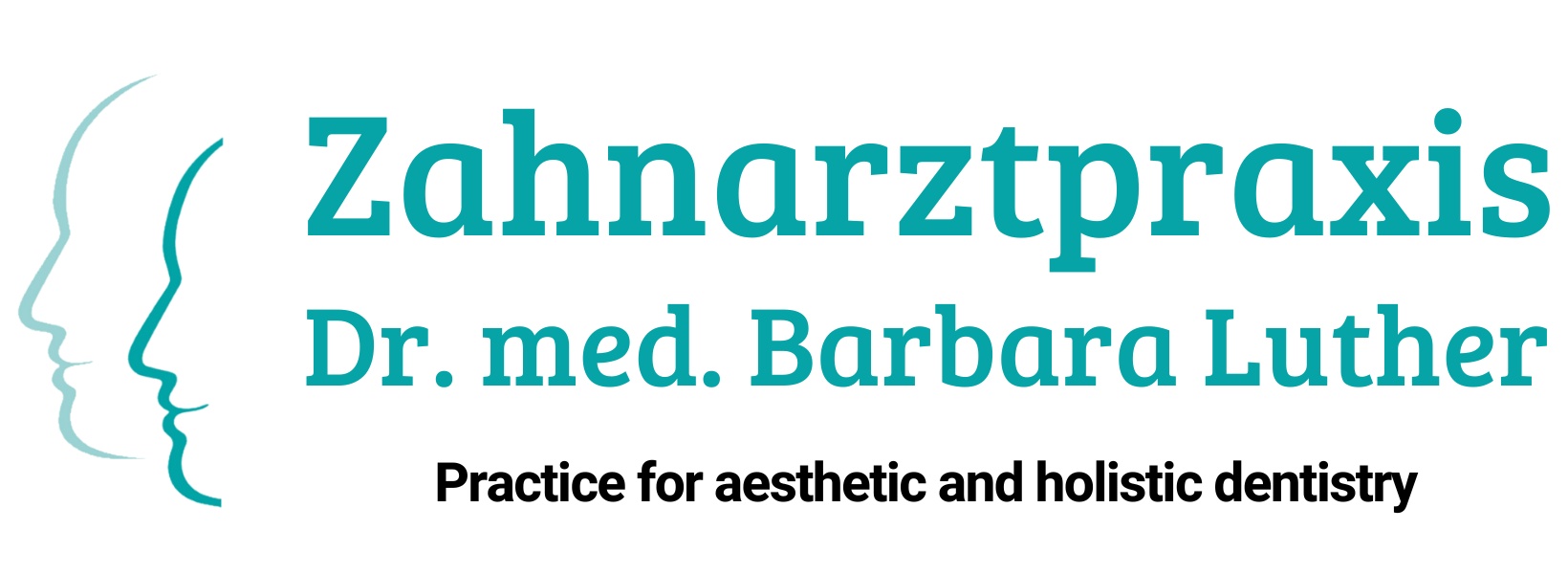Specialities
PACT / Laser
PACT uses laser light to activate special dyes that kill pathogenic bacteria. It is used in root canal treatment, for sterilisation during implant treatment, after caries removal near the tooth nerve, the pulp, for surface sterilisation on prepared tooth stumps, before dental prostheses such as crowns or bridges are fitted, but also in the area of gum pocket treatment during periodontal treatment.
Lasers in dentistry are used for various purposes. They can be used in the treatment of caries, periodontitis, root canal treatments and other dental procedures. A laser is a device that emits light energy in a focussed form.
In the treatment of periodontitis, a laser can be used to remove infected tissue and kill the bacteria. The laser beam can also help to reduce the formation of pockets between the gums and teeth and promote healing.
In endodontics (root canal treatment), a laser can be used to kill bacteria in the root canal and dry it so that there is no longer a breeding ground for these microorganisms. This contributes enormously to significantly increasing the success of root canal treatment.
It can also be used wonderfully to contain aphthae or incipient herpes blisters, as well as to reduce wound pain after surgical procedures.
Lasers can also be used for cosmetic purposes, such as whitening teeth or correcting gum problems.
The use of lasers in dentistry offers several advantages. They enable more precise treatments, reduce the risk of complications and infections, reduce bleeding and swelling after the procedure and can shorten the healing time.
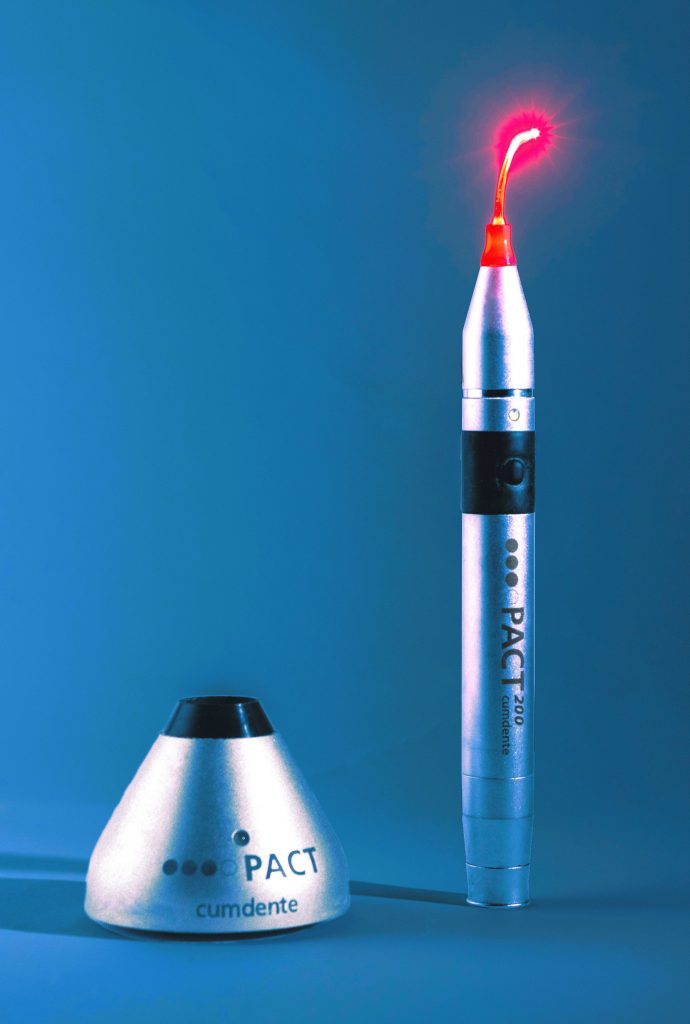
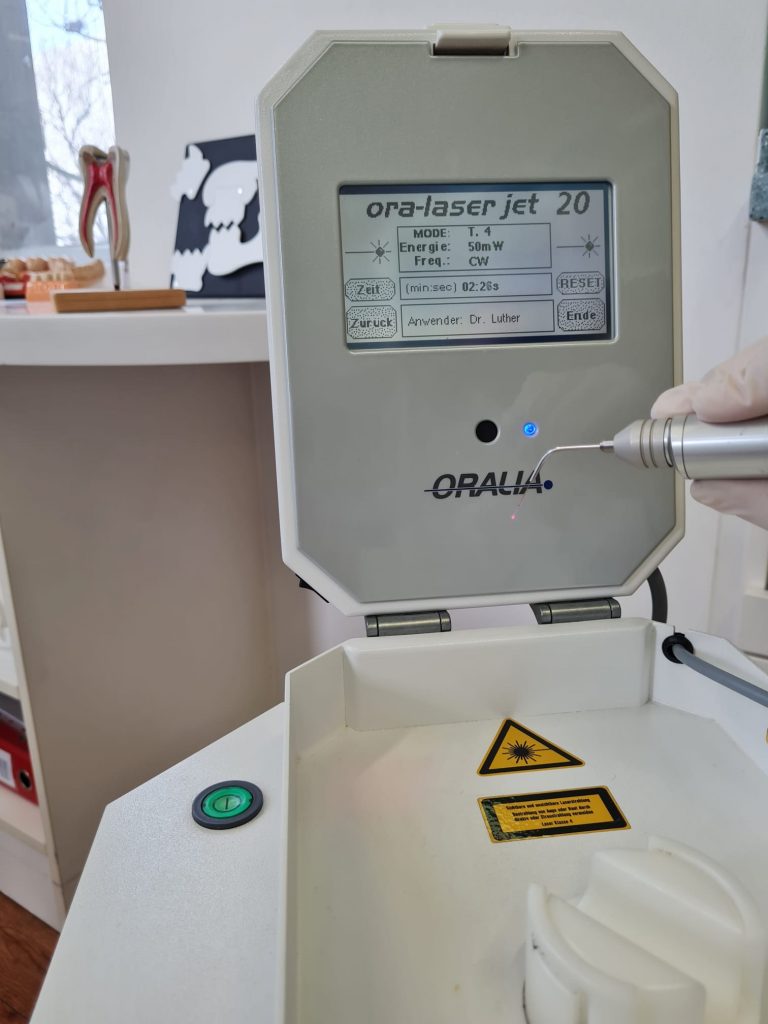
Nitrous oxide
Sedation, especially for anxious patients
When do we use nitrous oxide?
Nitrous oxide, also known as dinitrogen monoxide or N2O, is a colorless gas with a sweet smell. It is often used as an anesthetic in dentistry to sedate patients during dental procedures and relieve pain. It is administered as an inhalation gas by the patient breathing in a mixture of nitrous oxide and oxygen through a mask. Nitrous oxide has a calming and anxiety-relieving effect, which helps patients to be more relaxed and less sensitive to pain. It also allows for a quicker recovery after the procedure as it dissipates quickly from the body. It has no side effects and you leave the surgery with no after-effects. Another advantage is that you are not unconscious, you are responsive at all times. However, it is important to note that the use of nitrous oxide in dentistry should be supervised by a qualified dentist or specialist.
Nitrous oxide is used in dentistry in the following situations:
1. anxiety and phobia: Nitrous oxide can help patients overcome their fear of dental procedures. It creates a feeling of relaxation and calming, which helps the patient to tolerate the treatment better.
2. pain relief: nitrous oxide has an analgesic effect and can help reduce pain during dental procedures. It is often used in combination with local anesthesia to improve patient comfort.
3. restless or uncooperative patients: For children or patients with mental impairment, nitrous oxide can be used to keep them calm and cooperative. This makes it easier for the dentist to carry out the treatment.
4. long treatments: For longer dental procedures, nitrous oxide can be used to keep the patient relaxed and comfortable throughout the process.
This service is not covered by statutory health insurance!
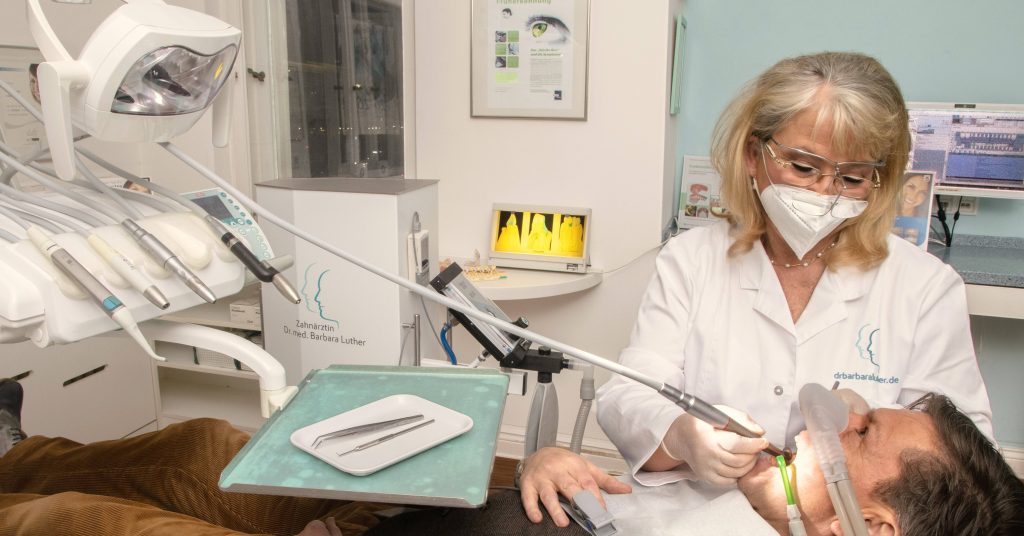
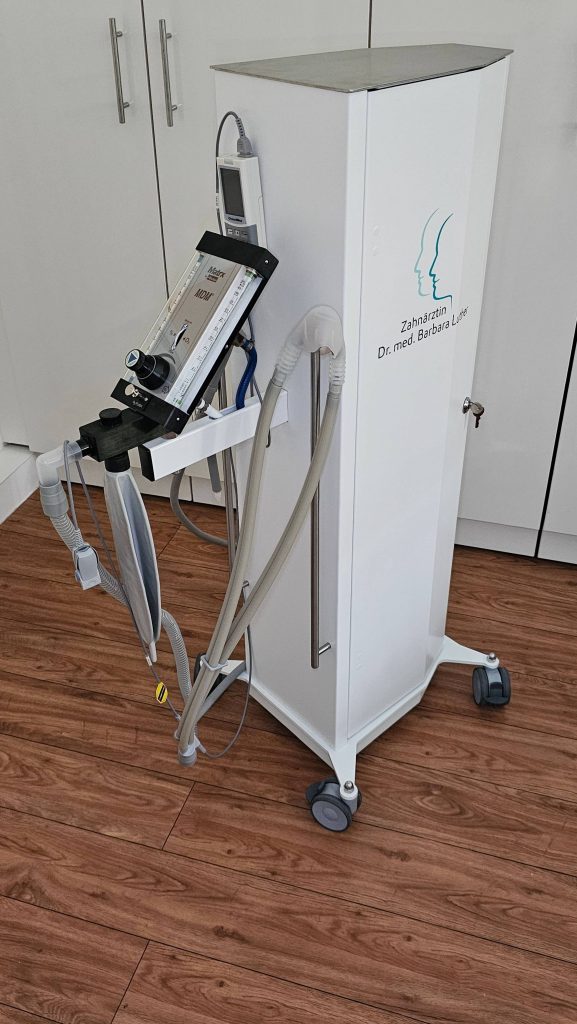
Where we use Nitrous oxide in the dental surgery:
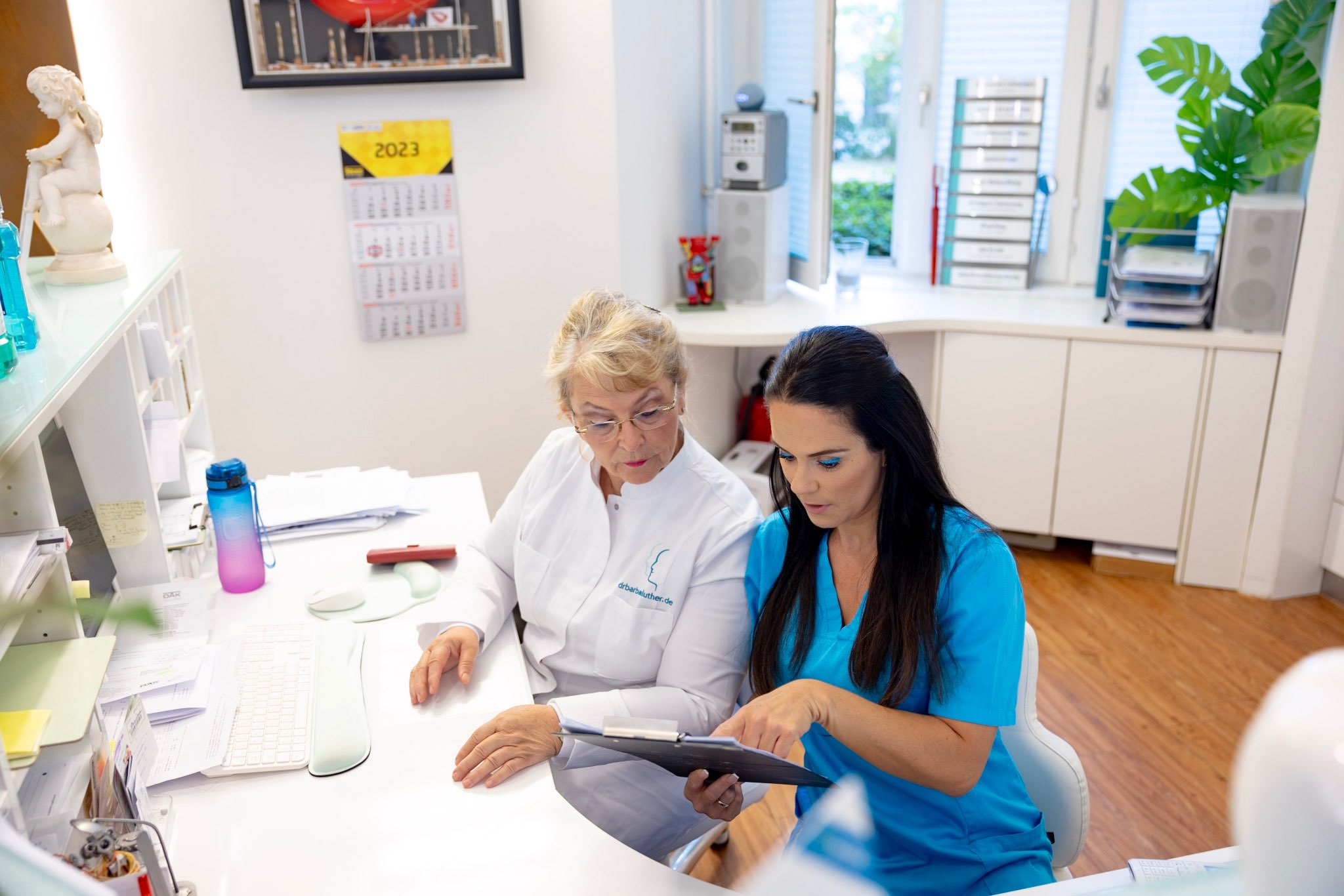
Nitrous oxide is not only used for surgical procedures, but is also very popular for longer sessions for the preparation of crowns and bridges in prosthetic restoration!
Twinkle
Would you like a little glitter, a little mica? – Here you go, what would you like?
“from diamonds to rubies or rhinestones”, almost anything is possible!
In my practice, these gems are not inserted into your own tooth material, but are attached to the tooth in question using a special bonding process.
This protects your tooth enamel and leaves no defect if the embellishment needs to be removed.
Another option is to insert such stones into any existing dentures.
The patient bears the costs.



